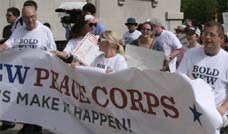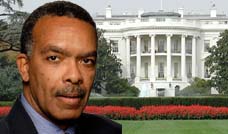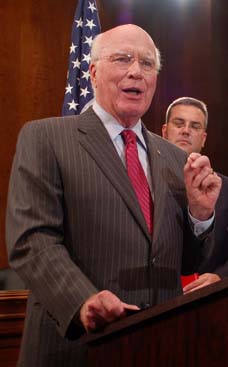
The purpose of this project is to create new images of West Africa, through an interactive environmental narrative informed by philosophies of game design. The content draws on my two years as a development worker in Mali. The imagery revolves around the hybridization of traditional Malian and Western culture, and overlaps between magic and technology, with an interface designed to allow the player to find the magic in the mundane.
Mali RPCV Aaron Oldenburg writes: The Mischief of Created Things
The Mischief of Created Things
Aaron Oldenburg
Assistant Professor, Information Arts Technology. University of Baltimore, MD
aaron.oldenburggmailcom
Abstract
The purpose of this project is to create new images of West Africa, through an interactive environmental narrative informed by philosophies of game design. The content draws on my two years as a development worker in Mali. The imagery revolves around the hybridization of traditional Malian and Western culture, and overlaps between magic and technology, with an interface designed to allow the player to find the magic in the mundane.
My process involved creating a three-dimensional environment in Flash that the player could explore non-linearly. Within the environment are characters with whom to converse, and conversation is based on a fluid navigation system similar to the environment's exterior exploration. Stories are based on my diary entries and letters home and were chosen for their personal, surprising, and multilayered nature. Rather than use traditional game design methods I chose to start with narrative and imagery first and create the game structure from them.
During play the user discovers narratives that build on one another throughout the course of the experience. The player uses these to form a meaningful picture of the environment as a whole. The order selected to experience the narrative changes its interpretation, as reading an event over another influences the understanding of subsequent events. The surprising and non sequitur nature of the narrative makes the non-player characters as well as the environment itself seem more plausible.
The Mischief Of Created Things
The problem with telling stories when you return from Africa is that people believe what you say, and in the process of narrowing the bridge between the foreign and the familiar, they create their own context for interpreting these stories. I felt like I had to supply an endless amount of background information to convey my interpretation. As a result, in The Mischief of Created Things, I create a landscape where my stories are spread out in a manner that allows visitors to pick and choose what to read, believe and understand, in an individual way. My main goal is to translate the subtle and mundane sort of magic I experienced there and create new images of West Africa, outside of the news of war and poverty that migrate into our imagination through media coverage.
Figure 1: Movement outdoors through the environment. Stills from *The Mischief of Created Things*, Aaron Oldenburg, 2007
The work is an interactive narrative dealing with images and stories from the two years I spent doing development work as a Peace Corps volunteer in Mali. The stories are told non-linearly through the environment; that is to say, the visitor navigates the landscape and explores narratives that emerge from information embedded therein.(1) The events in the story take place over a compressed day and a half, and time progresses when the player performs certain actions. Content is conveyed through conversations with non-player characters (NPC's) as well as by fantastical imagery shown in waking and dreaming actions to portray what is felt. Visuals are a mix of hand-drawn two-dimensional illustrations that move in three-dimensional space, viewed from a first person perspective. These are run on an engine created using the software Adobe Flash and accompanied by ambient sound.
This is not a game but an interactive narrative informed by game design methods. Early conceptions of the project saw it as a critique of the role of charity and international development in the developing world-a game where the character is an aid worker with fixed humanitarian goals, who gradually, throughout the course of trying to achieve those goals, realizes that his work is having unintended consequences. That idea changed to one that was less didactic. I realized that there was something more important, nuanced, and beautiful in creating new images of West Africa than in arguing something political about which many have already written. But both strategies had the similar intentional basis; that of addressing the view that there is something more important and powerful in the region that escapes foreign perceptions imposed from the outside.
To achieve this, I worked backwards from traditional game design methods. Habitually, the rules of the game are created first and their effectiveness measured by the degree of "fun" experienced by these rules detached from any story, graphics, or any other effects.(2) In my case, however, the images and narrative were more important, and once these and the environment were established, the necessary rules and games structure followed. This created the possibility of having structures outside of well-known game clichés. Starting with a preconceived game structure would have ended up trivializing the deeper elements of the narrative.
Katie Salen and Eric Zimmerman in their book Rules of Play discuss the idea of meaningful play as important to successful game design.(3) For play to have meaning, the results of actions must be communicated to players in ways that the player can perceive, and the outcomes of these actions must be woven into the larger context of the game. It is possible that the player will not see the results of actions they have taken until much later in the game. In The Mischief of Created Things, discoveries of narratives build on one another throughout the course of the experience and are used by the player to form a meaningful picture of the environment as a whole.
Humanization of Computer Processes
Figure 2: Conversation by selection of moving silhouettes. Stills from *The Mischief of Created Things*, Aaron Oldenburg, 2007.
Artificial intelligence is more convincing when it is laced with non sequiturs. There is an AI term called graceful degradation, which is a standard practice of outputting eccentric responses when the AI system doesn't know how to deal with unexpected user input. This has the dual benefit of masking the limitations of the AI's logical response system as well as making the entity seem more compelling.(4) This also makes the AI more convincing because often the user will project their own reasons for the response and therefore project their own consciousness into the gap between the previous rational conversation and the sudden irrational response.
In The Mischief of Created Things I deal with projection of consciousness into the protagonist's character. Two-way conversation in computer games has always been problematic. Usually the gameplay is fluid: the player can wander wherever they want, interact with a multitude of objects and NPC's (non-player characters), and accomplish tasks out of order. But when a conversation comes up, often if there is any choice it is through a list of set responses in the form of quotes.(5) So how does a game designer give the act of conversing as much complexity and fluidity as the gameplay? In this project there are two types of conversations: one in which NPC's respond to mouse-clicks with semi-random, but chronologically rational responses, and another that superimposes moving silhouettes on the screen representing possible conversational topics for the player to choose. This gives the player a sense of agency through choice of response and also continues with the feeling of movement and exploration felt in the rest of the game. The fact that the conversation topics are represented by silhouetted shapes gives the player opportunity to project themselves into the role of responder. It allows the player to understand what was said based on the shape they've chosen and the NPC's concrete response, the intention being that the player creates their own interpretation of what they say based on their choice of abstract symbol.
I was a crisis counselor for five years and the experience of focusing on the issues of other people, their questions and contradictions, without directly telling them what to do, is an experience that explains my interest in interactive art, in that in both cases the goal is to give the other a sense of agency while at the same time only hinting at the paths that might be the most rewarding.
Choices of Narrative and Imagery
Figure 3: Reading the Qu'ran with shifting images. Stills from *The Mischief of Created Things*, Aaron Oldenburg, 2007.
To select imagery for the project I went through journal entries and letters I had written home and chose stories that were personal or revealed something multi-layered about an individual in a fairly succinct way. I also pulled particularly strong images from which I could isolate and create an environmental vignette.
I think that there is a difference between this kind of narrative and what is known as colonial travel writing. More importantly, I am interested in using the artist's perspective rather than the anthropologist's. An example of this would be Maya Deren's work in Haiti, where she used her artist's sensibility to enter a shared aesthetic or religious experience to make connections with people. While travel writers have written extensively about magic in West Africa, when I emphasize the fantastical, I am not necessarily talking about beliefs in magic. Further, I do not play the role of the anthropologist who catalogs what people believe in and the stories they tell. In selecting the stories for the narrative, rather than cataloging, I am driven by a different set of criteria. A significant percentage of the stories in this project are in there because of their poetic content.
Magic and Technology
Figure 4: Computer scanning a magical bracelet. Stills from *The Mischief of Created Things*, Aaron Oldenburg, 2007.
The Mischief of Created Things deals with magic in several ways. One form of magic is the projection of consciousness into inanimate beings through gaps left by conversational non sequitur. This consciousness is created by going between the familiar and the foreign, the known and the unknown. In addition, content deals with a crossover between magic and technology. For example, in the game, the NPC called Amadou betrays doubt in his belief in the magical powers vested in his bracelet by asking if the newly arrived computer can scan it and tell him what magical powers it has. Aside from showing an interest in the mystery of technology, this conversation also indicates possibilities for technology to carry on elements of traditional culture and belief. The title The Mischief of Created Things refers to a line from the Qur'an stating the possibility of God's creations doing a person harm (mischief) as well as good. I see this type of mischief in created things as an example of alternate uses of technology, such as Amadou's use of the computer scanner. I also see mischief in the creation of consciousness in inanimate objects.
Conclusion
Because of its interactive, nonlinear, nature there is a variety of narratives available in The Mischief of Created Things based on the sequence of events the player experiences. Knowledge of some events influences interpretation of other events, but interpretation of events in isolation from each other is also possible. Sometimes, unintended connections between events might occur as a result of the players' particular combinations, as well as a result of individual experience and preconceived ideas brought into play in narrative reading. Many aspects of the narrative touch on ideas that people feel strongly about, such as religion, poverty, and war in Africa. The imagery and conversations within the game are both surprising and mundane. However, when they do reference these loaded subjects, they hopefully cause the viewer to suspend judgment and re-examine the way they might feel about these issues.
In The Mischief of Created Things I use non sequitur and surprise to make non-player characters believable, as well as to make Mali, the larger NPC, seem both plausible and magical. Through surprise, randomness, and intentional and unintentional juxtaposition, the environment itself comes closer to becoming a living, breathing entity.
Endnotes
1. Henry Jenkins, "Game Design as Narrative Architecture," in First Person, (Cambridge: MIT Press, 2004), 118-130.
2. Raph Koster, Theory of Fun for Game Design (City: Paraglyph, 2004), 166.
3. Katie Salen and Eric Zimmerman, Rules of Play (Cambridge: MIT Press, 2004), 35.
4. Marie-Laure Ryan, Narrative as Virtual Reality (Baltimore: Johns Hopkins University Press, 2001), 313 – 314.
5. Michael Mateas, "A Preliminary Poetics for Interactive Drama and Games," in First Person (Cambridge: MIT Press, 2004). 19-35.













